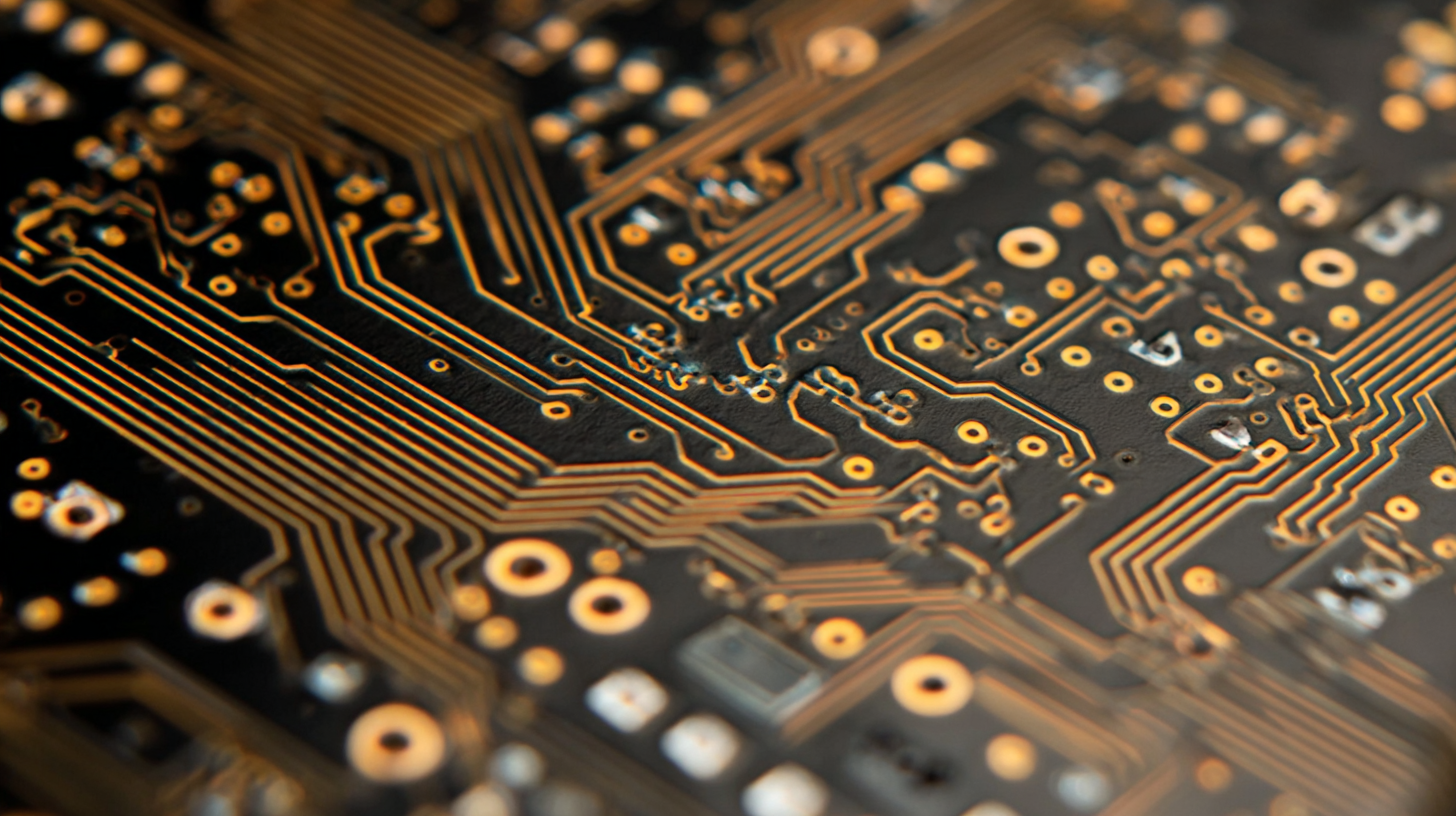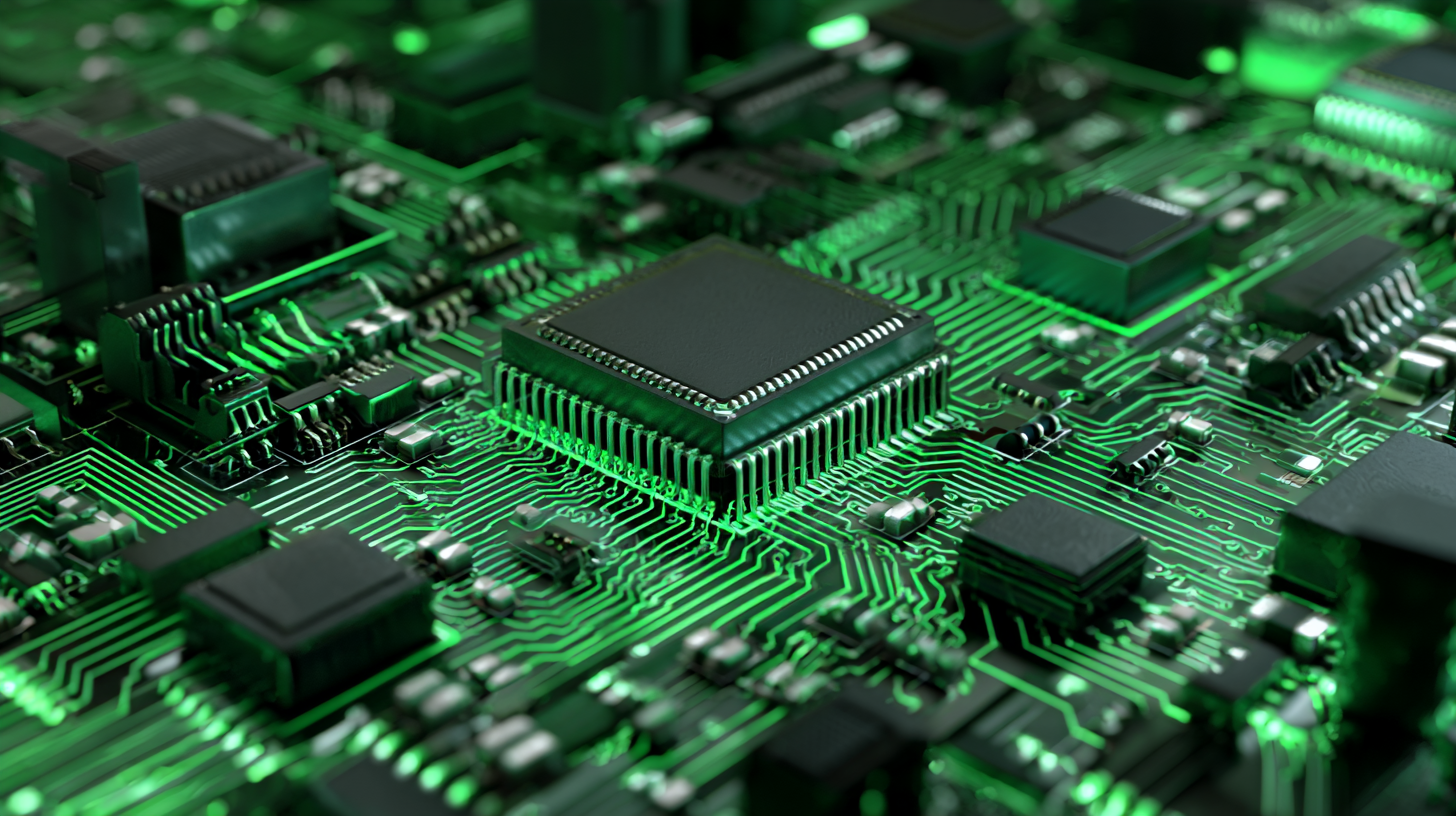Innovative Examples of the Best Printed Circuit Board Designs in Today’s Technology
In the rapidly advancing world of technology, printed circuit board design (PCB design) is at the forefront of innovation, serving as the backbone for numerous electronic devices and systems. According to a report by Market Research Future, the global PCB market is expected to reach a valuation of over $80 billion by 2026, driven by increased demand across sectors such as consumer electronics, automotive, and telecommunications. Innovative PCB designs are crucial to meeting the requirements for miniaturization, efficiency, and performance in modern applications, fostering developments such as high-density interconnects (HDI) and flexible circuit boards. As we explore some of the best examples of PCB designs today, it becomes clear that these innovations not only enhance device functionality but also address challenges related to thermal management and signal integrity. The following sections will delve into top strategies that define effective PCB design, spotlighting innovative practices and techniques that are shaping the future of technology.

Innovative PCB Designs Revolutionizing Electronics: A Comparative Analysis
The rapid advancement of electronics technology has spurred a wave of innovative printed circuit board (PCB) designs that are transforming the way devices function and perform. Modern PCBs are not only essential for connecting electronic components but also serve as the backbone for more efficient and compact designs. Today's innovative PCB designs incorporate techniques like multi-layering, flexible substrates, and advanced thermal management, allowing manufacturers to create smaller, lighter, and more powerful devices that cater to the demands of modern consumers.
One standout example of revolutionary PCB design is the use of embedded components within the layers of the board itself. This technique optimizes space and reduces signal loss, enhancing device performance. Additionally, advancements in materials—such as high-frequency laminates and environmentally friendly options—are making it possible to produce PCBs that meet the rigorous demands of high-speed applications. As more sectors, from aerospace to consumer electronics, leverage these innovative designs, the impact on efficiency and performance continues to be profound, showcasing the vital role of PCBs in the evolution of electronic technology.
Innovative PCB Designs Revolutionizing Electronics: A Comparative Analysis
| Design Feature | Description | Key Benefits | Application Areas |
|---|---|---|---|
| Flexible PCB | Used in applications where space and weight are critical. | Lightweight, compact design allows for complex configurations. | Wearable technology, medical devices, aerospace. |
| High-Frequency PCB | Designed for high-speed digital and RF applications. | Reduced signal loss and better overall performance. | Telecommunications, satellite communications, IoT devices. |
| Multilayer PCB | Layers are stacked to interconnect various elements. | High component density and improved circuit performance. | Computing devices, automotive electronics, advanced consumer products. |
| High-Temperature PCB | Designed to withstand extreme conditions. | Enhanced reliability in harsh environments. | Aerospace, military applications, industrial machinery. |
| Bio-Compatible PCB | PCB suitable for medical implants and devices. | Safe for direct contact with biological tissues. | Implantable devices, surgical instruments, diagnostic equipment. |
Key Performance Metrics: Evaluating Efficiency and Reliability in PCB Design
When evaluating the efficiency and reliability of printed circuit board (PCB) designs, several key performance metrics emerge as crucial indicators. According to a report by IPC, the global trade association for the electronics industry, advancements in PCB technology have led to a 30% increase in reliability over the past five years. Factors such as thermal management, component density, and signal integrity significantly influence a PCB's overall performance. Thermal performance is particularly vital, as improper heat dissipation can lead to lag in functionality or even component failure, contributing to increased production costs.
Moreover, the shift toward high-density interconnect (HDI) technology is a game-changer in PCB design. Reports indicate that HDI boards offer up to 50% more functionality in a smaller footprint than traditional PCBs. This compactness results in improved electrical performance and reduced signal loss, which is critical in high-frequency applications. Implementing advanced simulation tools and analysis methods in the design phase allows engineers to anticipate potential failures and optimize design parameters, ultimately enhancing reliability and reducing time-to-market. The continuous evolution of design metrics and practices underscores the importance of data-driven approaches in achieving best-in-class PCB designs.
Key Performance Metrics in PCB Design
Trends in Miniaturization: How Smaller PCBs Are Shaping the Future of Tech
The ongoing trend of miniaturization in technology is fundamentally reshaping the landscape of printed circuit boards (PCBs). As devices become smaller and more compact, the demand for PCBs that can fit into these spaces has never been greater. Innovations in manufacturing techniques and materials are making it possible to design PCBs that occupy significantly less real estate while still delivering high performance. Ultra-thin substrates, flexible PCBs, and advanced multilayer designs are just a few examples of how manufacturers are responding to the need for space-saving solutions.
Furthermore, smaller PCBs are enabling the proliferation of portable electronics, wearables, and Internet of Things (IoT) devices, all of which require highly efficient and compact circuit designs. This miniaturization is not just about reducing size; it's also about enhancing functionality. Engineers are now integrating more components and capabilities into smaller footprints, driving the evolution of smart technology. As we look to the future, the trend toward smaller PCBs will likely continue, pushing the boundaries of what is possible in both consumer and industrial electronics.
Sustainability in PCB Manufacturing: Comparing Eco-Friendly Practices Across the Industry
The electronics industry, particularly in the realm of printed circuit boards (PCBs), is at a pivotal point where sustainability is becoming a cornerstone of innovation. Recent achievements in eco-friendly manufacturing practices highlight the commendable efforts by companies prioritizing environmental protection alongside technological excellence. For instance, advancements such as biodegradable substrates for both rigid and flexible circuit boards showcase a promising shift towards greener alternatives, aiming to mitigate the detrimental impacts of traditional materials often used in PCB production.
Furthermore, the industry is witnessing a growing trend of adopting sustainable practices from the design phase through to the end of a product's lifecycle. By phasing out unsustainable materials and incorporating renewable resources, manufacturers can significantly reduce their ecological footprints. This transition not only fulfills regulatory compliance but also meets the rising consumer demand for environmentally conscious products. As the market for PCBs continues to expand, estimated to grow substantially in the coming years, embracing sustainability will not only enhance the competitive edge but also foster a responsible approach to technological advancement.

Emerging Technologies: A Side-by-Side Review of Flexible vs Rigid PCB Applications
In the ever-evolving landscape of technology, printed circuit boards (PCBs) play a crucial role in the functionality of electronic devices. The emergence of flexible and rigid PCBs has transformed the design possibilities, catering to diverse applications across industries. Flexible PCBs, or FPCBs, offer unparalleled adaptability, allowing designers to create compact and lightweight devices that can bend and conform to various shapes. This feature is particularly beneficial in the growing field of wearables and portable electronics, where space is limited and flexibility is essential.
On the other hand, rigid PCBs remain the backbone of most electronic systems, providing durability and stability for applications that require robust performance. Industries like automotive, aerospace, and industrial automation heavily rely on rigid PCBs due to their ability to handle high power and support complex circuitry. A direct comparison reveals that while flexible PCBs excel in applications demanding mobility and space efficiency, rigid PCBs shine in environments where reliability and strength are paramount. Understanding the unique strengths of each type allows manufacturers and designers to leverage the best PCB technology for their specific needs, fostering innovation and enhancing product performance.

